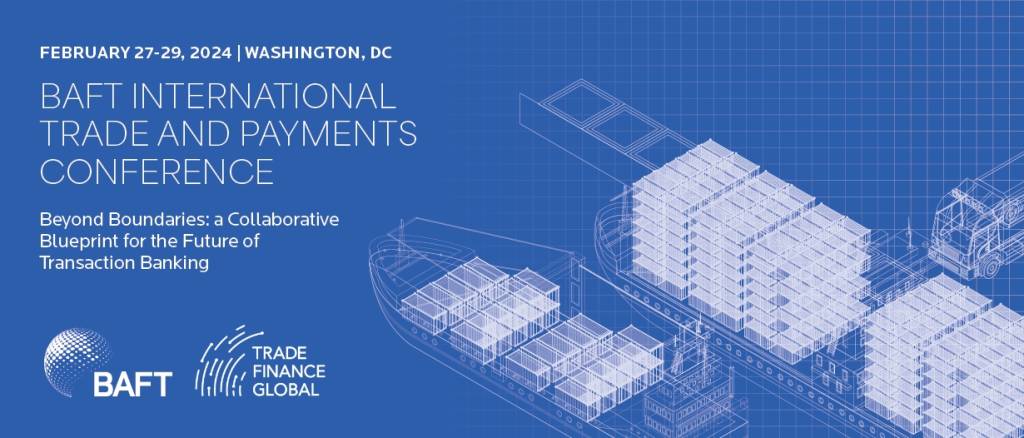Estimated reading time: 6 minutes
Listen to this podcast on Spotify, Apple Podcasts, Podbean, Podtail, ListenNotes, TuneIn
2024 is set to bring about significant changes in finance and banking. Driven by a convergence of cutting-edge technologies, the industry-wide transition to ISO 20022, the rise of digital currencies, and innovative AI-powered solutions, the year holds promise for considerable advancements and enhanced alignment between fintech and traditional financial institutions.
The potential impact of these advancements is substantial, promising more efficient, innovative, and cost-effective solutions in banking, investment, and insurance.
However, to ensure a secure and efficient transformation, it is imperative to address the challenges that accompany these changes. The emerging trends not only signal a transformative journey in banking and financial services but also underscore the importance of striking a balance between innovation and responsibility.
In anticipation of the BAFT International Trade and Payments Conference from 27-29 February 2024, in Washington, DC, TFG’s Deepesh Patel sat down with Tom Zschach, Chief Innovation Officer at Swift.
Balancing innovation and regulation
As cross-border payments are increasingly moving to the digital space, the G20 has made enhancing cross-border payments a priority under its Cross-Border Payments Roadmap that it began to work on with the Financial Stability Board (FSB) and other entities in 2020. The G20’s commitment to enhancing cross-border payments by 2027 includes four strategic targets:
- Limiting costs
- Improving speed
- Boosting access
- Increasing transparency.
Leading the way in this transformative journey, Swift has made remarkable progress toward meeting these targets. Currently, 89% of transactions processed on the Swift network reach recipient banks within an hour, surpassing the speed targets set by the Financial Stability Board (FSB) to achieve one-hour processing for 75% of international payments by 2027.
Zschach highlighted Swift’s dedication to these goals, saying, “Swift has taken these targets very seriously, and we’re making good progress on some of those targets already.”
This momentum shows Swift’s commitment to expedite delivery and enhance banking services, challenging common perceptions about the necessity of payments to travel through chains of intermediary banks before reaching their final destination.
Despite the progress towards achieving the Roadmap targets, some challenges and gaps between the Roadmap’s targets and the current state are still persistent. For instance, Zschach pointed out the complexities of screening for sanctions and financial crimes, underlining the impact of repeated checks that vary by jurisdiction, creating friction in cross-border payment transactions.
Additionally, he emphasised the often-overlooked compliance costs, saying, ‘’What doesn’t get talked about probably enough is the compliance cost, it’s both expensive and labour-intensive.’’ According to LexisNexis Risk Solutions’ ‘True Cost of Financial Crime Compliance Study for 2023’, global financial institutions invest over $200 billion annually in combating financial crime.
Acknowledging these challenges, Zschach reiterated Swift’s proactive role in collaborating with the community to craft efficient solutions. He expressed, “At Swift, we are actively working with our community to tackle these compliance challenges and develop solutions that not only meet requirements but also address financial crime more efficiently.”
The G20’s Roadmap shows the critical role of international payments in global economic growth, emphasising the need for industry-wide collaboration to achieve tangible improvements.
The ongoing efforts within the financial industry align with the shared goal of enhancing the speed, cost, transparency, choice, and access of cross-border payments—a collective pursuit ignited by the G20 in 2020 and set to accelerate during 2024.
ISO 20022: A new language for cross-border payments
Cross-border payments have historically operated on fragmented standards, burdened by local practices and their variations. These often variable and inconsistent messaging standards have restricted effective communication among Financial Market Infrastructures (FMIs), Financial Institutions (FIs), machines, and ecosystems, lacking a common language.
After years of intense preparation, the global financial community began the migration to the ISO 20022 standard for cross-border payments and reporting (CBPR+) on March 20, 2023, establishing a new language for the global payments industry.
Zschach emphasised, “The migration to ISO 20022 improves data richness, enhances customer experiences and automates processes like invoice reconciliation.” The introduction of structured data is a game-changer, promising smarter and faster financial operations. Financial institutions can therefore leverage this newly-found language for improved analytics, compliance, and innovative opportunities for enhanced customer experiences that can ultimately change the dynamics of cross-border payments.
Complementing this move, Swift proactively develops solutions to facilitate the adoption of the ISO 20022 standard. With a vast community of over 11,500 financial institutions, the global financial messaging network has introduced the Payment Pre-validation tool.
Articulating its significance, Zschach noted, “We’ve recently launched a payment pre-validation solution that allows our financial institutions to reduce the risk of rejected payments or missing data before the payment is instructed.”
Driven by advanced APIs, the tool empowers financial institutions to validate the accuracy of data input into payment instructions, before being moved from one country to another, ultimately reducing errors in the transaction process.
Moreover, as the world continues to make rapid progress in Artificial Intelligence (AI), it is increasingly evident that machine learning can contribute to achieving the G20 targets on cross-border payments.
Hence, Swift is actively developing AI-powered solutions that ensure transactions are instant, frictionless and safeguarded from financial crime. As Zschach noted, “Swift has started its journey with AI and machine learning, developing technologies to detect anomalies and abnormalities in payment flows across the network.”
This includes identifying errors in data, operational issues, and even signs of potential fraud. The integration of AI and machine learning aligns with Swift’s commitment to staying ahead of challenges and enhancing the overall security and efficiency of cross-border payments for its community.
Swift’s role in the rise of CBDCs
Central bank digital currencies (CBDCs) are increasingly gaining momentum. According to The Atlantic Council CBDC tracker, 130 countries, representing 98% of global GDP, are now exploring CBDCs.
Nineteen G20 countries are well-advanced in CBDC development, with nine currently in the pilot phase. Despite this progress, many central banks are predominantly concentrating on domestic applications, potentially resulting in a fragmented landscape if not adequately addressed.
To counter this fragmentation, Swift has prioritised focus within its innovation agenda on interoperability for digital currencies and tokenised assets to enable them to scale if and when they are deployed into the financial ecosystem.
Its work on CBDCs began in October 2022 and, in the first phase of its experiments and sandbox testing conducted with 18 central and commercial banks, almost 5,000 transactions were simulated between two different blockchain networks and with existing fiat-based payment systems.
Building upon the groundwork laid in 2022, Swift has entered a new phase of its work on CBDC interoperability throughout 2023, with 3 central banks beta-testing its innovative solution for interlinking CBDCs.
Zschach highlighted this commitment, stating, “We developed an experimental interlinking solution that connects new CBDC networks with the existing payment rails.” Moreover, Swift has also initiated a second phase of sandbox testing, exploring more complex use cases such as trigger payments related to trade finance and securities settlement.
Looking ahead, Zschach expressed optimism about Swift’s pivotal role, affirming, “We’ve been able to validate with our community that we’ll be able to provide solutions that connect existing payment rails to new digital networks.”
The active collaboration of over 30 financial institutions, comprising market infrastructures, commercial banks, and central banks, in these experiments indicates strong industry support for Swift’s forward-thinking approach.
The iterative process of testing, refining, and collaborating with the community ensures that Swift can address real-world challenges and enable a global financial system where CBDCs coexist with traditional payment rails.

To find out more about the topics covered here see the sessions on the Payments Track, please see the website for BAFT’s International Trade and Payments Conference here.
























